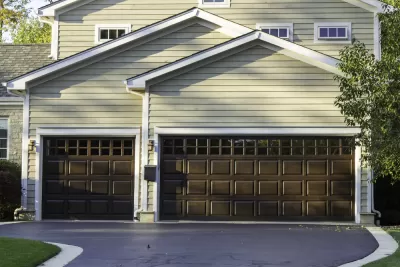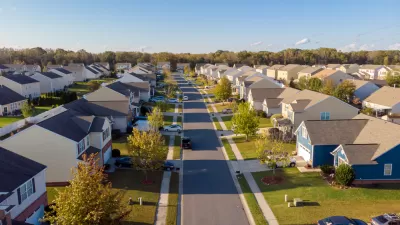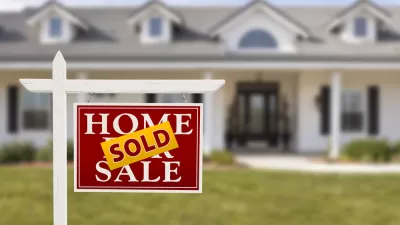As people perform more daily functions at home, homeowners and renters are seeking larger footprints to accommodate a broader range of uses.

Paul Bergeron reports that single-family homes in the U.S. are growing in size, "in part because of homeowners’ desire for more space in response to the virus crisis and the opportunity (or necessity) for working from home."
Median floor area grew between the first and third quarters of this year, and industry experts expect the figure to continue growing as people find themselves doing more of their routine tasks—work, school, entertainment—at home. Meanwhile, rental properties continue to see high demand as many potential homebuyers are priced out of the market. For many renters, Bergeron writes, expanded storage is an increasingly important preference.
According to a separate article by Tyler Wilkins, build-to-rent homes, particularly in suburban areas, are growing in popularity and attracting powerful investors as many households decide to opt for the flexibility, convenience, and lower monthly costs of rental homes. But some city officials fear that investors will buy up rental homes and charge excessively high rents, prompting some localities to issue a moratorium on new rental subdivisions. While the model holds the potential for predatory landlords, housing advocates argue that single-family rental homes fill a gap in an increasingly volatile housing market.
FULL STORY: Single-Family Home Sizes Have Been Trending Larger This Year

Alabama: Trump Terminates Settlements for Black Communities Harmed By Raw Sewage
Trump deemed the landmark civil rights agreement “illegal DEI and environmental justice policy.”

Planetizen Federal Action Tracker
A weekly monitor of how Trump’s orders and actions are impacting planners and planning in America.

The 120 Year Old Tiny Home Villages That Sheltered San Francisco’s Earthquake Refugees
More than a century ago, San Francisco mobilized to house thousands of residents displaced by the 1906 earthquake. Could their strategy offer a model for the present?

Oregon Legislature to Consider Transit Funding Laws
One proposal would increase the state’s payroll tax by .08% to fund transit agencies and expand service.

Housing Vouchers as a Key Piece of Houston’s Housing Strategy
The Houston Housing Authority supports 19,000 households through the housing voucher program.

Rural Population Grew Again in 2024
Americans continued to move to smaller towns and cities, resulting in a fourth straight year of growth in rural areas.
Urban Design for Planners 1: Software Tools
This six-course series explores essential urban design concepts using open source software and equips planners with the tools they need to participate fully in the urban design process.
Planning for Universal Design
Learn the tools for implementing Universal Design in planning regulations.
Clanton & Associates, Inc.
Jessamine County Fiscal Court
Institute for Housing and Urban Development Studies (IHS)
City of Grandview
Harvard GSD Executive Education
Toledo-Lucas County Plan Commissions
Salt Lake City
NYU Wagner Graduate School of Public Service





























